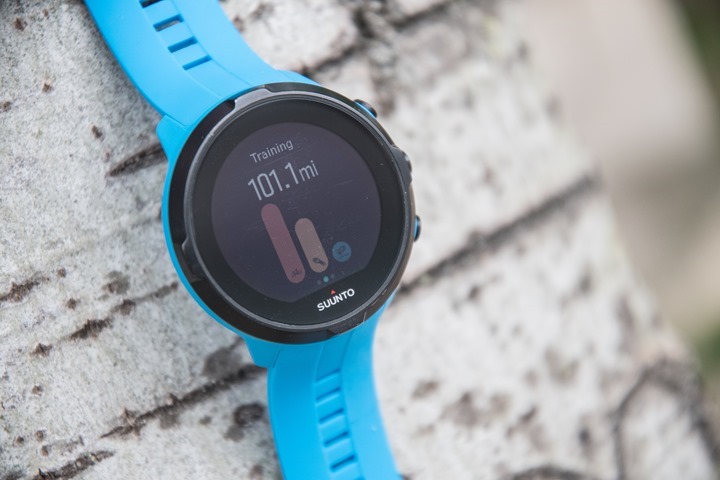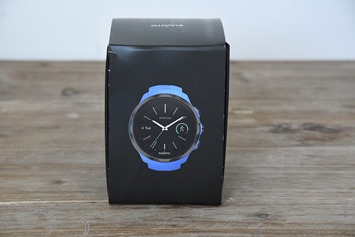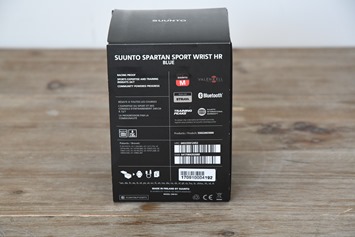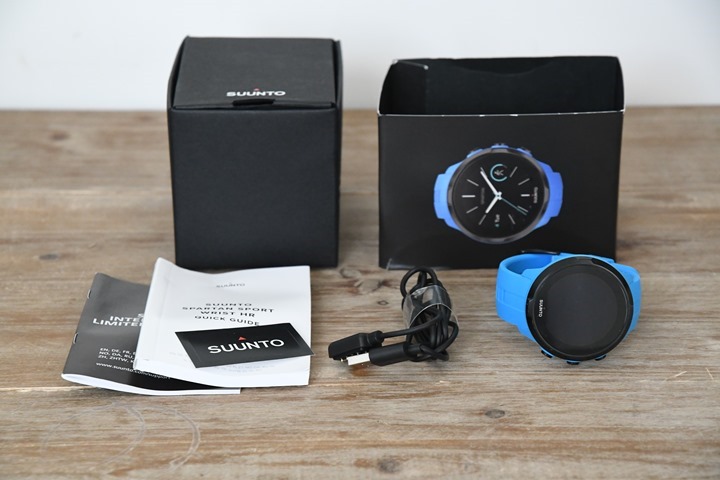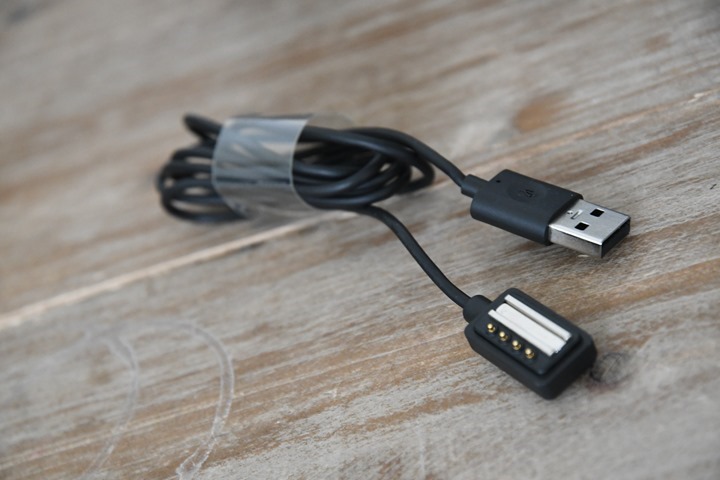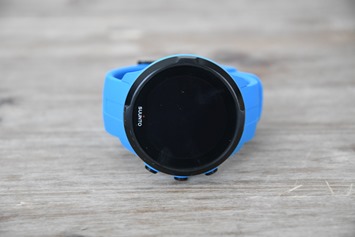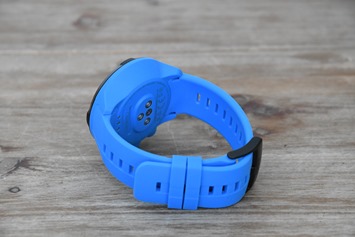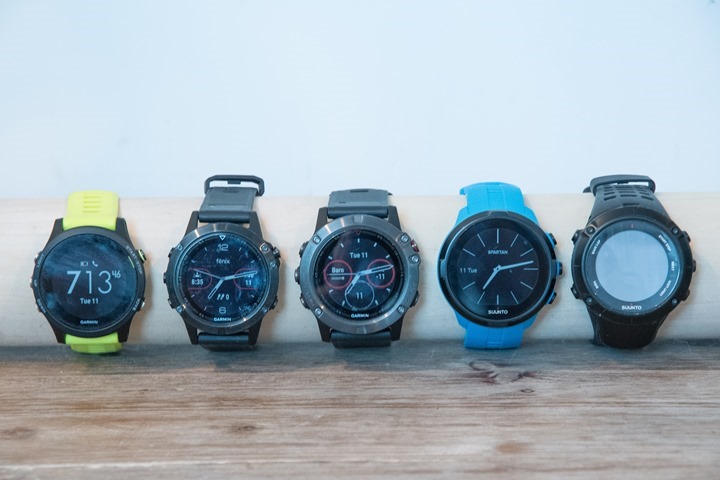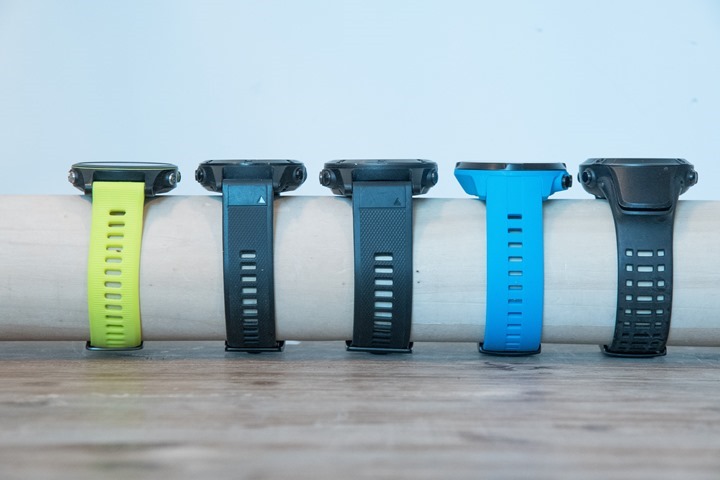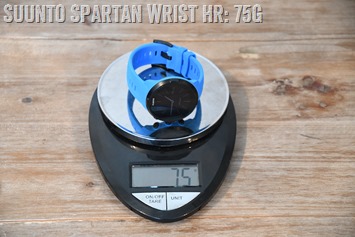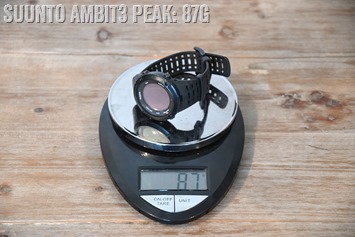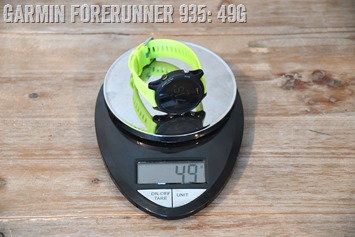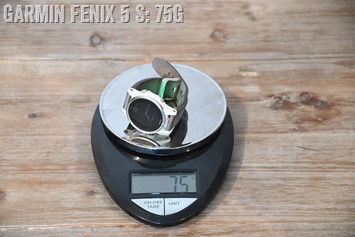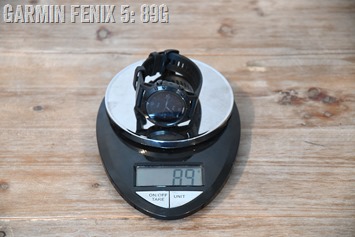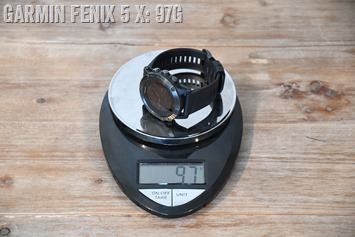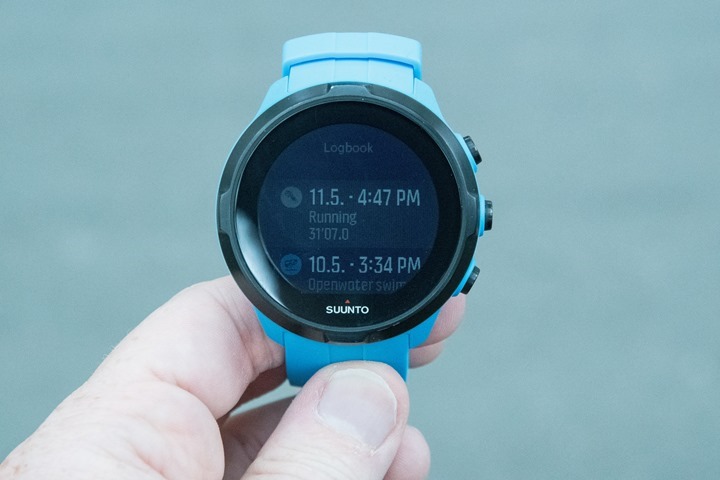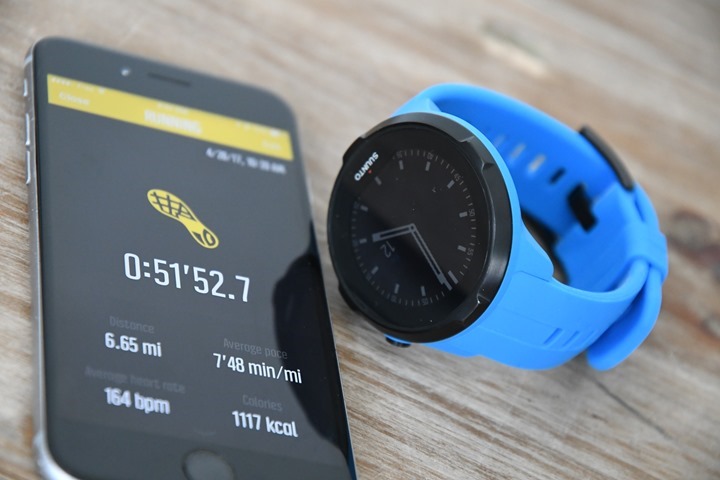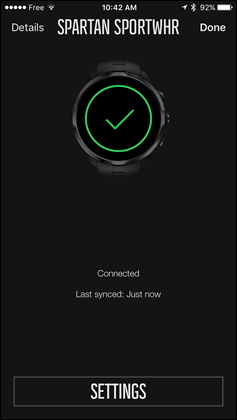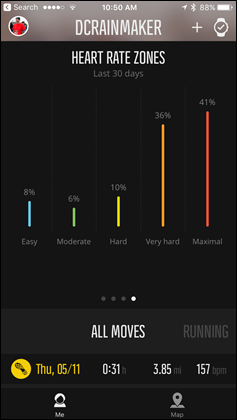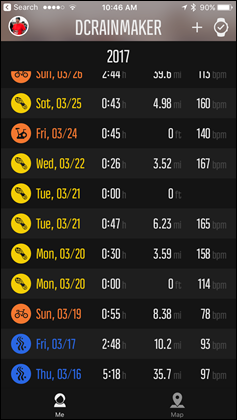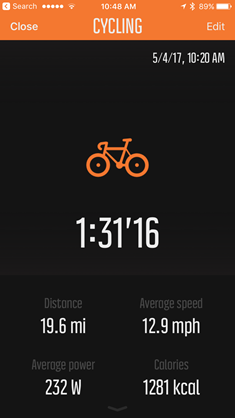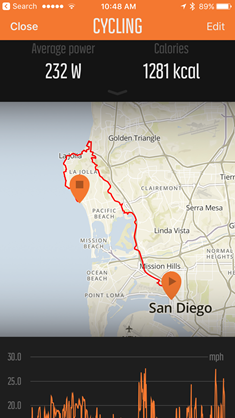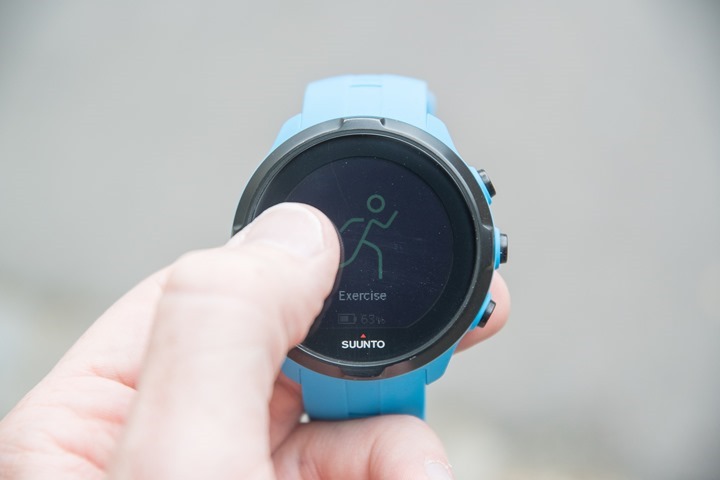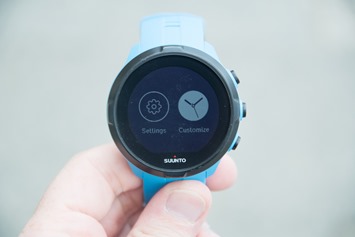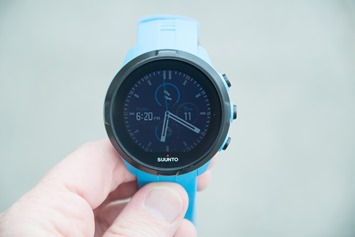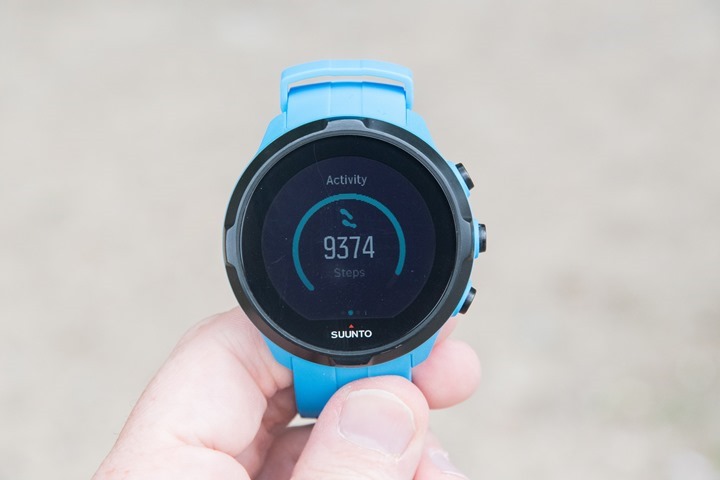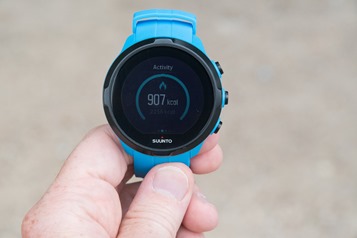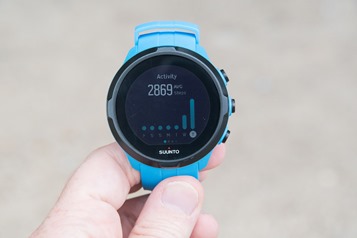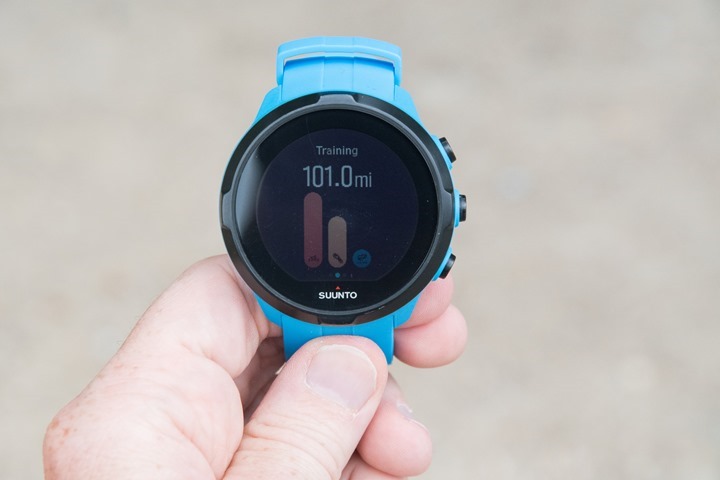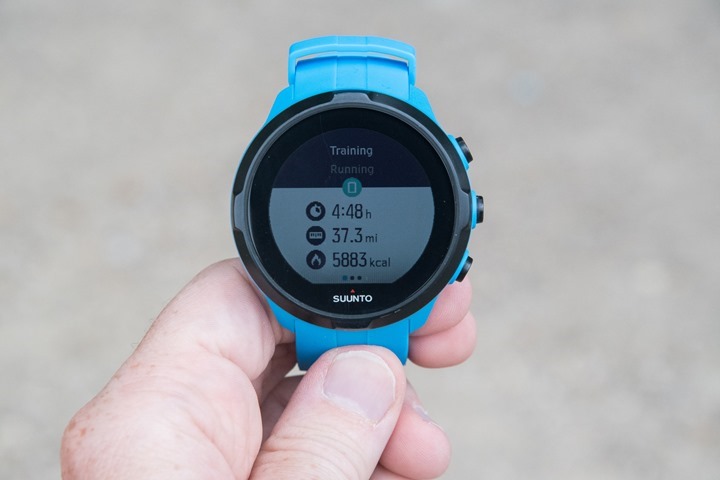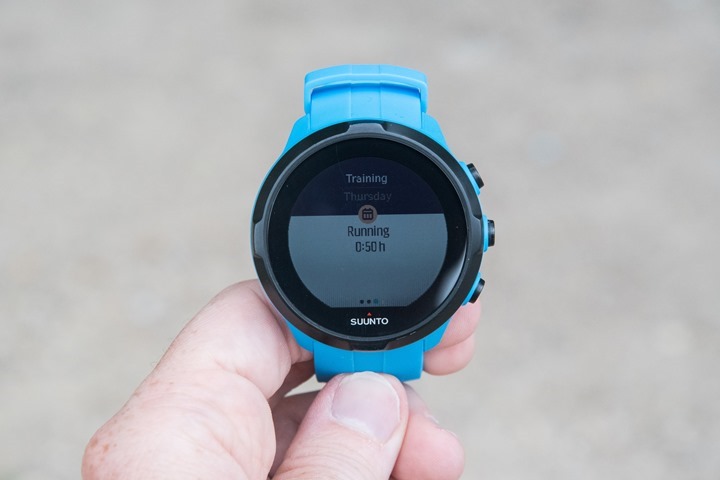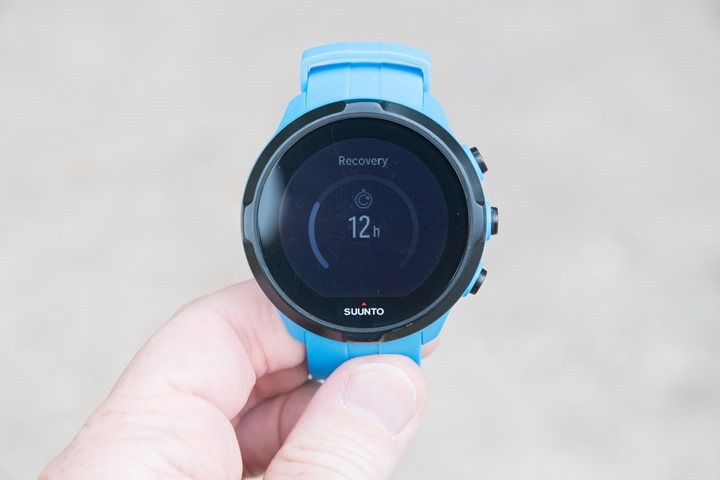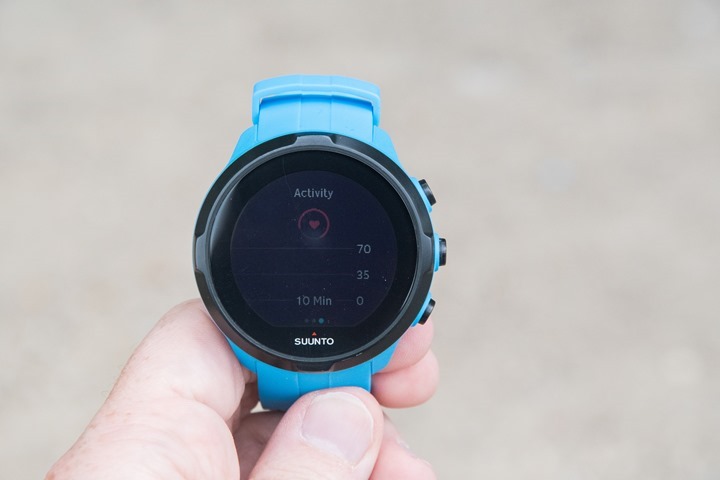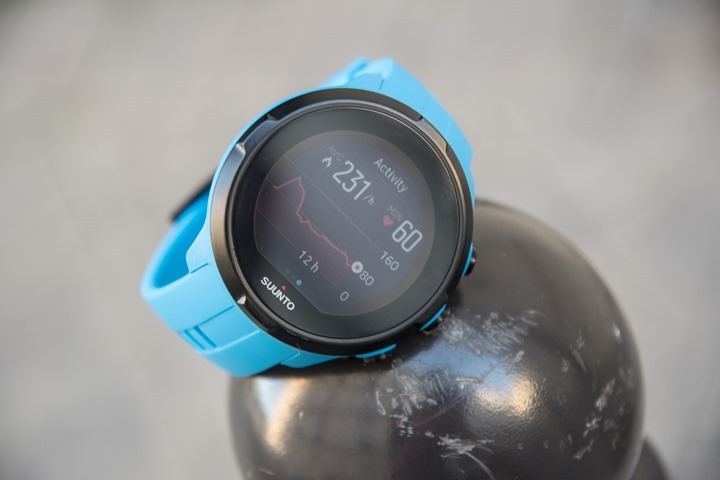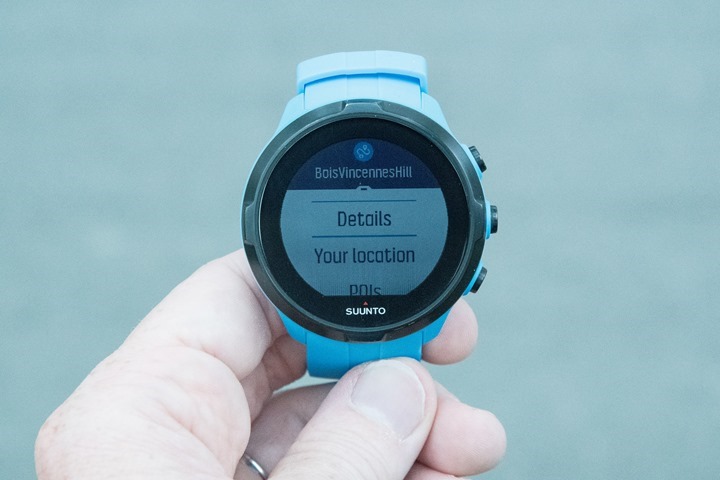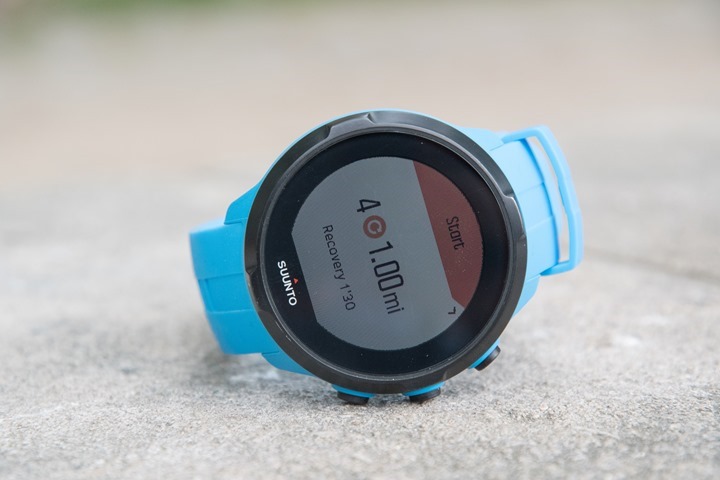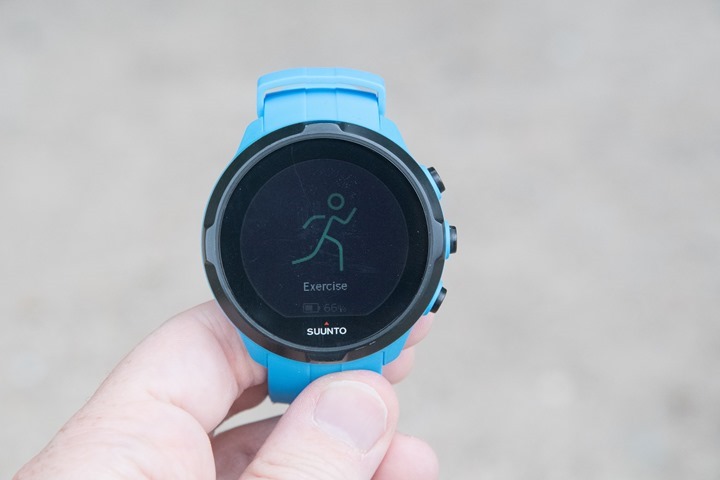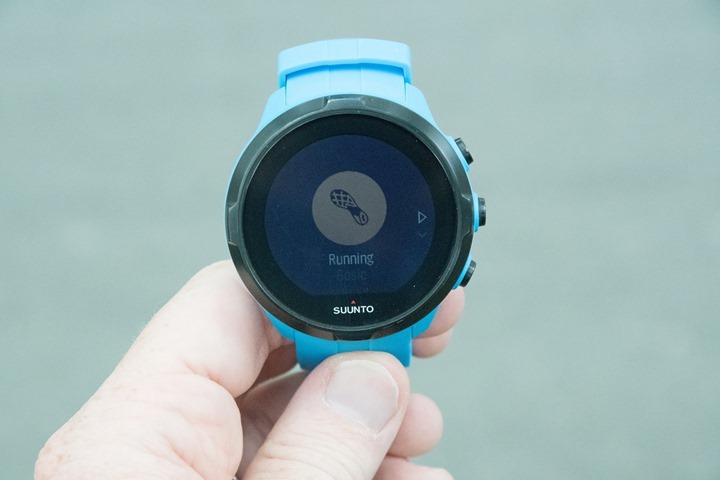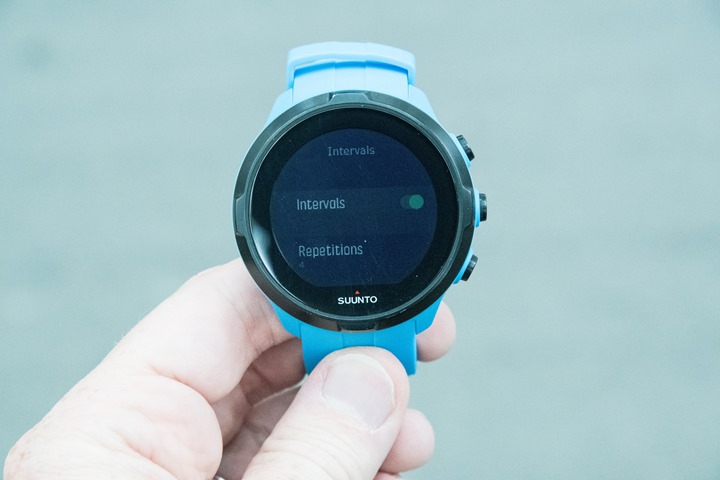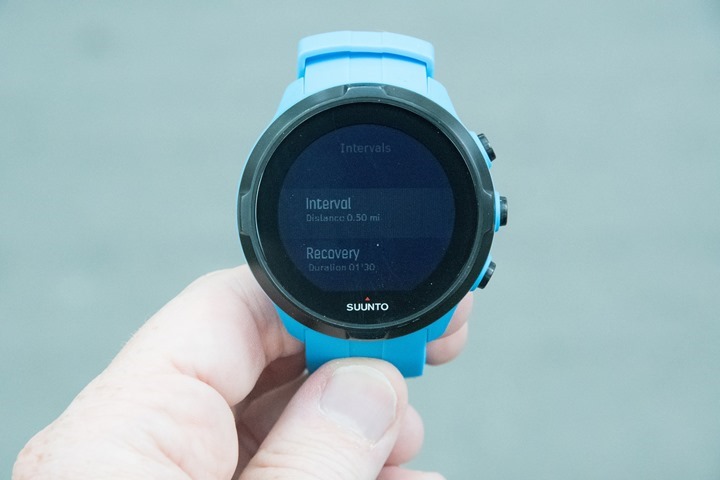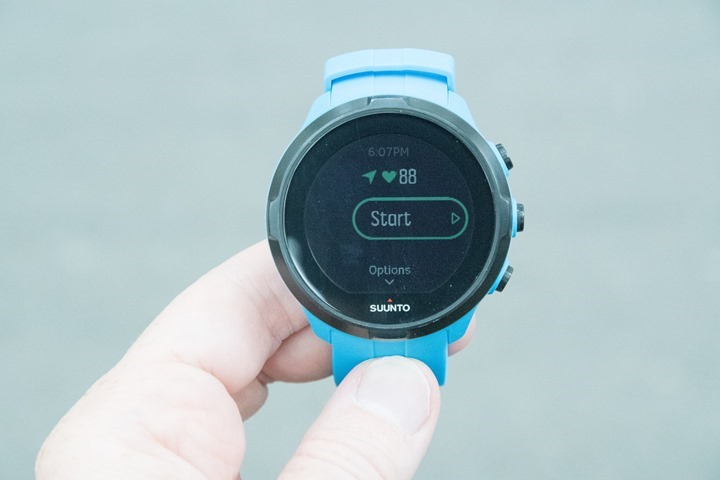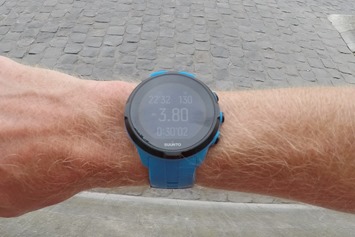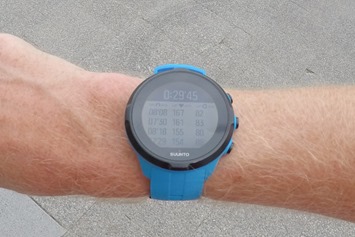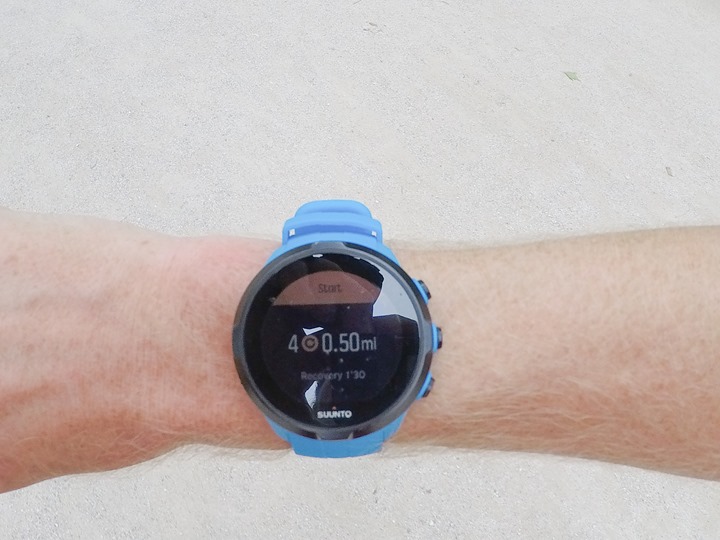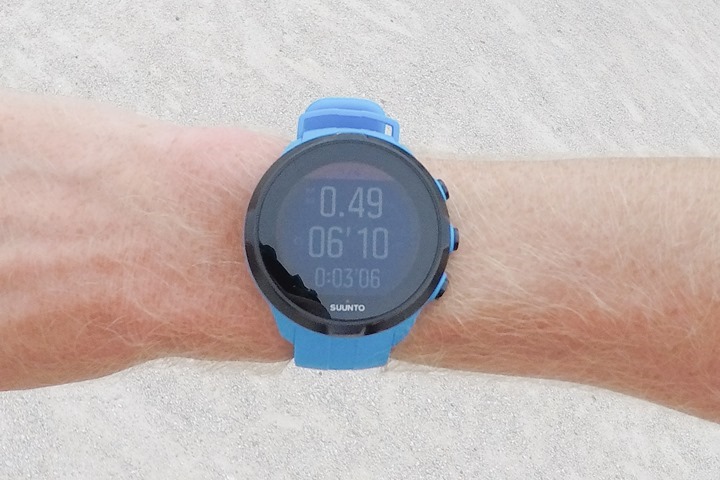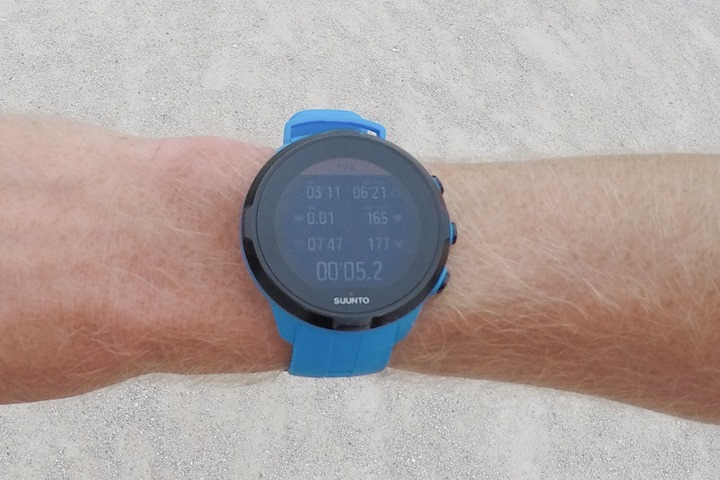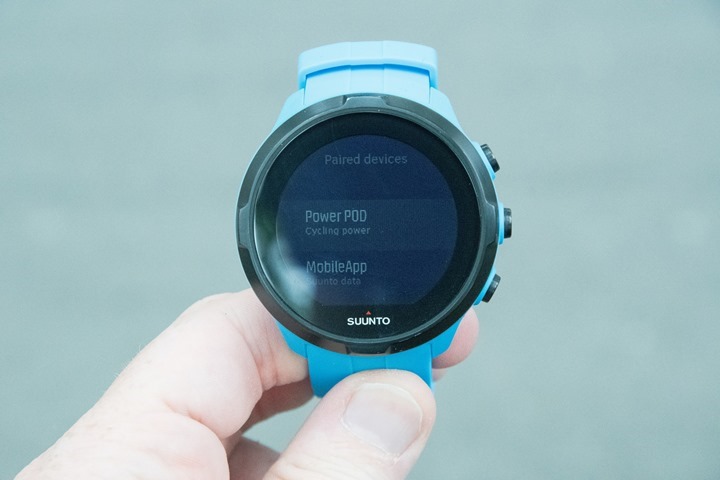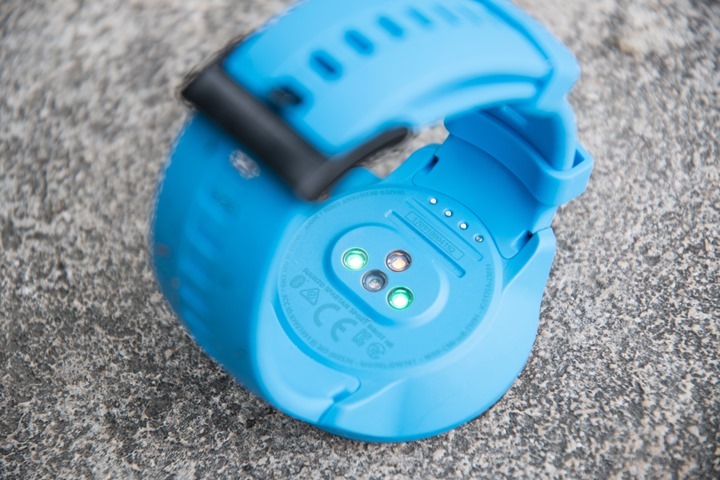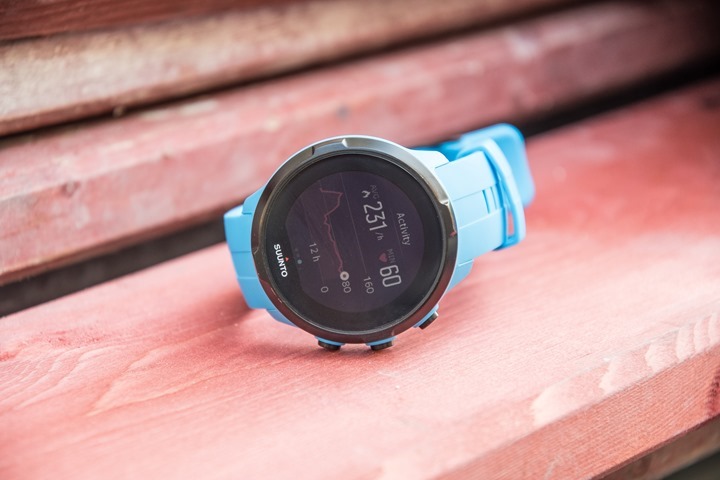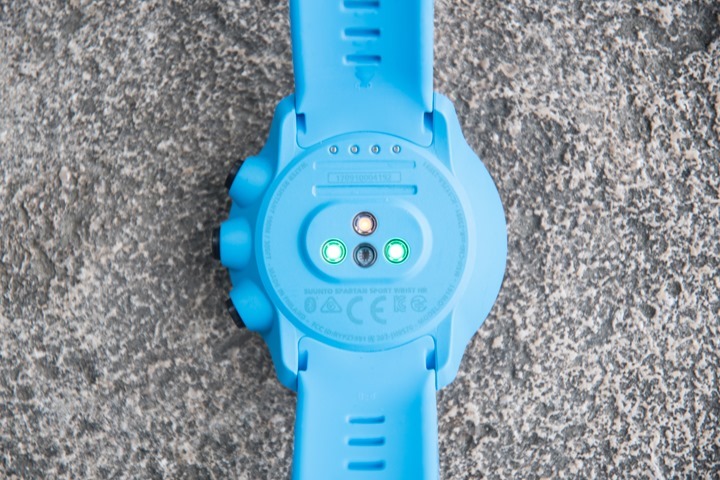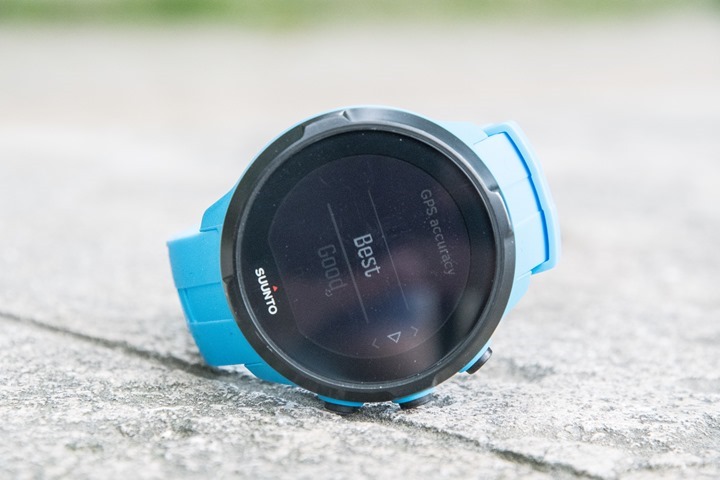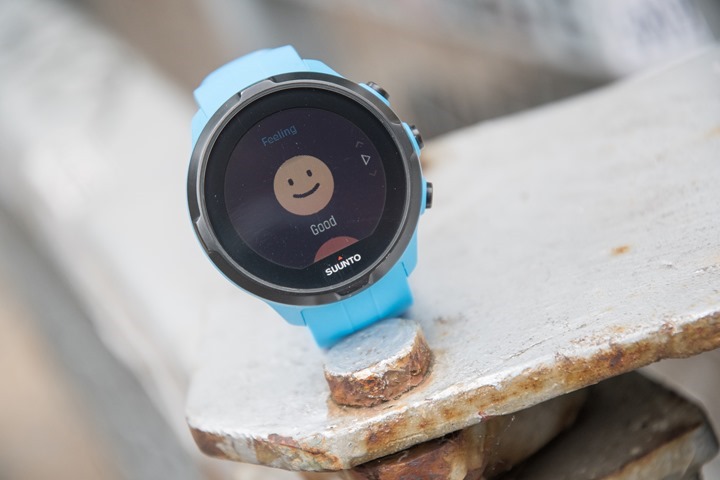Last summer (2016) amidst Suunto announcing the Spartan series, they made note of a planned optical heart rate enabled version that would be released down the road. Fast forward to this past January (2017) and at CES they did just that – the ‘Wrist HR’ lineup, often just abbreviated as WHR. This lineup took the existing Suunto Spartan Sport and added a Valencell optical heart rate sensor into it, giving you heart rate data directly from your wrist during both workouts and any other time you wanted it.
They started shipping the units back on March 31st – in conjunction with another major firmware update for the Spartan series.
Now as you may remember, I reviewed the Spartan series last fall when it first came out. By Suunto’s own admission, that release was a wee bit premature. Simply put: The product wasn’t ready. But a lot has changed since then. They’ve added back in tons of features previously found on the prior Suunto watch lineups, plus some new ones. Accuracy has improved and generally speaking people are boatloads happier with it than they were nine months ago.
So this review will really be focused on two core things:
A) Is the optical HR sensor within the Wrist HR accurate? And how does it work?
B) Some of the changes that have occurred since my previous review of the Spartan series
I note that because my goal this spring has been to minimize writing ‘churn’. Meaning, re-writing the same stuff I wrote before. Be it this Suunto Wrist HR review, or the Garmin FR935 review – I’m trying to get better at covering what’s new/unique/different about the unit in comparison to before. So while I’ve used it for many basics like smartphone notifications, I’m not going to dive as-deeply into those areas since they work just fine. Instead, I want to dive deeper into the things that are more unique about the product.
With that – let’s get cooking. Oh, and as usual, I’ll be sending back this loaner unit to Suunto once I wrap up this review. From there I’ll go out and get a unit through normal retail channels. Onwards we go!
Unboxing:
First up is getting the unit out of the box. If you’re a Suunto regular you’ll find the box setup here virtually identical to most of their past watches, including the rest of the Spartan series.
Once you crack it open you’ll find the watch sitting there looking up at you. Inside we’ve got a small smattering of parts:
This includes the paper manual stuffs that you’ll probably never read (especially after this post). Then we’ve got the charging cable. This is the same charging cable used on the rest of the Spartan series, though it is different from that used on the previous Ambit series. I definitely prefer this one, as the magnetic clip system works better than the side-clip thingy from the past.
And finally, the watch itself:
It’s pretty simple – there’s not much else within the box to talk about. That said, I did make an entire unboxing video that includes not just the unboxing but also a walk-through size comparison against numerous other watch models. You can find that goodness below:
For those that prefer pictures and text, you’ll also find the size comparisons below.
Model and Size Comparison:
So how does it stack up in terms of size? Ask and you shall receive! Here’s a lineup of watches to ponder. Left to right: Forerunner 935, Fenix 5, Fenix 5X, Suunto Spartan Sport Wrist HR, and Suunto Ambit 3 Peak.
And then here’s the same, looking at the stack height (depth) on them:
As for weights? Ask and you shall receive:
And again, remember in the video above – starting around the 4:11 marker – you can see a boatload of other watches and much more commentary on all the nuances of size, including the older Suunto units too.
The Basics:
Ok, I know I said I wasn’t going to cover all the basic stuff, but I’ve gotta at least cover some basics. Don’t worry, we’re going to keep this brisk and then move onto other areas. Also, you’ll note much of what I highlight here is more unique to updates since last fall.
So like the rest of the Suunto Spartan series the unit has all of the smartphone connected features you’d come to expect from most smart-watches these days. That means you’ll get smartphone notifications on your watch (from any app, not just calls/texts), which can be dismissed from the watch itself once read.
This connection uses Bluetooth Smart and is maintained anytime your phone is nearby the watch. It does not require the Suunto Movescount mobile app on your phone to be opened up for generic smartphone notifications. Whereas the Movescount mobile app is used for syncing workouts and settings.
Within this app, you can configure basic profile settings, as well as which sports are sync’d to the watch itself. You cannot, however, configure specific data screens/fields/pages for your watch, as that must be done using the full Suunto website (like past Suunto watches, it can’t be done on the watch either).
Generally speaking, most workouts will sync in less than a minute, though that varies a bit based on the length of the workout as well as how many sensors you’ve connected and whether or not GPS is involved.
When it comes to the watch itself, the display is a touchscreen, enabling you to swipe up/down through the menus. You can also use the buttons to do so as well, which can be a good idea in tougher conditions like snow or rain where touch can be a bit trickier.
While Suunto has made good gains in terms of improving the speed of the user interface, I’d argue it still feels sluggish at times. Not so much in sport modes (it’s fine there), but just navigating through the generic screens like the settings. It’s hardly a deal-killer, but I know some will ask about that.
The main screen can be customized with some different watch faces if you like. You can’t create your own watch faces, but they’ve got a few to choose from. These can be selected on the watch itself.
If you scroll down from the main screen you get into the activity as well as training and load screens. First up is the activity screen, which shows your current steps against the goal for the day. If you tap the screen it shows you calories. And then you can also swipe left to see daily steps per day.
And these days, this activity tracking properly shows up on the smartphone app and web as well – something it didn’t do in the past! Note however that at this time Suunto does not track any sleep metrics (at all), nor do they track distance walked (at all). So compared to most daily activity trackers, they’re a bit far behind.
If you swipe right, you’ll get to your instantaneous/continuous heart rate graphs. But I’ll come back to that in just a second – hang tight!
Scrolling down, you get to your recent training load pages. The first is a bar graph showing sports and totals per sports. Note this does reset after each firmware update, though it sounds like the next firmware update in June will rectify that issue.
If you swipe to the left you’ll see more details of the latest sport type you’ve completed, cycling in my case:
Meanwhile, if you swipe right, you’ll see upcoming training as per Movescount. These aren’t structured trainings per se, but rather just reminders to do workouts. Think of them like the digital equivalent of a sticky note telling you to do a 45-minute run. It’s not going to give you instructions during the run but is just a casual way of reminding you to run in the first place. This is different from what Polar and Garmin have, which actually executes the structured workouts during the run, with each step as you run.
Finally, scrolling down one more time you’ll see your current recovery time, which is based on heart rate inclusive workouts and is cumulative across workouts.
But let’s back up a second to the continuous heart rate piece I briefly mentioned a moment ago. Within the Spartan Wrist HR, you get the ability to check your heart rate at any time by navigating through the menu to the activity page, and then swiping to the right. You’ll see the below page which will immediately start monitoring your HR and do so with a trailing 10-minute graph.
Note that it will only show your heart rate while looking at that data page, not otherwise. However, you can tap that page and then see the last 12 hours of heart rate data. When you do that the unit will be polling every 10 minutes to get a heart rate reading. It’ll stay lit up to 60 seconds each time to get a lock on your heart rate.
When in this mode it does seem to pretty significantly reduce the battery life of the watch – I can’t really get anywhere near a full week once I include a daily workout of an hour in there (with GPS). On the screen above you’ll also see your average calorie burn rate over the last 12 hours (whereas on the 10-minute screen you see the hourly burn rate based on that 10 minutes). It’ll also show you the lowest HR achieved during that 12 hours, which is most often considered your resting heart rate (RHR).
Note that you do have to enable this menu option, which is under the Settings > Activity > Daily HR.
Also, note that at present none of the continuous heart rate data is saved to Movescount or visible on the Movescount app or site. It’s all fart in the wind stuff. Once beyond the 12 hours, the data is gone. That said, Suunto is looking into getting this data saved later this year, but doesn’t have a super-specific timeline on it yet.
The value in this data is more for resting heart rate trending. To understand that, see this separate detailed post I put together last year.
Finally, to wrap things up, I want to at least mention navigation. The unit has added new navigation functions since last fall, which make it more competitive. And then coming next month, it gets even more (Track back to start).
However, one of the things folks have been asking for is an update in general for my original Spartan Ultra/Sport review. So I’m writing a new navigation section covering all Spartan devices (they’re all identical), and I’ll be pasting it into both reviews. That’ll happen over the next week at the latest.
Still, I’ve gotta say – one of my favorite things ever on the Suunto platform is really the heat maps. It just makes finding spots to train so much easier. Which in turn can be used for creating routes on Movescount to then send to your unit. In particular, my favorite part is that I can filter by sport. This is excellent for example when trying to find swimming routes. Or to filter out people winter skiing if you’re trying to find summer hiking trails on a ski resort.
But again, more on that shortly! With that, let’s dive into sport usage.
Sport Usage:
To start with sport usage, it’s probably best to start with actually customizing your watch to display the data and fields you want. This is an important area that wasn’t previously available last fall when the Spartan series first launched, but has since become an option. Note that virtually everything I talk about in this section is applicable to all Suunto Spartan series watches (unless otherwise noted).
To configure your settings, you’ll go onto Movescount and then select ‘Watches’ from the dropdown menu in the upper right corner, where you can select your specific paired watch. If you don’t have 28 Suunto watches paired to your account like I do, you’ll likely see fewer watches listed. Like 1 or something.
Here you’ll see all the settings for your watch. Each settings area is expandable to dig into more settings, the biggest of which is ‘Sport modes’.
Within this, I can add any of the gazillion different sport modes that Suunto offers to my watch (which can have up to 20 on the quick access list). And each sport mode umbrella group (like ‘Cycling’) can have variants within it – such as cycling with power, or in a group, etc… Allowing you to tweak settings slightly for that particular purpose.
One weird oddity though is that you can’t simply customize existing sport modes. Instead, you’ve got to recreate a new sport mode anytime you want to tweak a data field or layout. Which…is somewhat annoying.
You can start off by choosing the specific data page layout you want:
Then from there you’ll select the fields within it. You can do up to 7 data fields in a page – which is quite a bit more than Garmin maxing out at 4 fields (though, there are some Connect IQ apps to get around that). Still, it’s a distinct advantage for Suunto:
As I’ve mentioned before – one of my favorites is actually the lap summary screen, which isn’t found on many other wearables out there. It lists the laps as you go through it. But I’ll show some real-life pictures of that in a moment.
Beyond the data pages, it’s here that you can customize sport-specific settings like Autolap or GPS accuracy. Some of these can also be tweaked on the device (such as GPS accuracy). While others must be done via the website.
Lastly, down below the sport profile settings are more generic options for the device as a whole. Most of these haven’t changed since last fall.
With all that out of the way, let’s head out for an activity. Running in this case, though for the most part all sports work pretty similar in terms of ‘workflow’. To begin, you’ll either swipe or button-press up to the ‘Exercise’ menu:
Then from there you’ll select your specific sport mode. You can iterate through any of the modes you’ve configured. You can also press down within a sport mode and access some settings like GPS accuracy or the interval feature.
Speaking of which, Suunto has introduced this new interval feature which is the first time we’ve seen such a capability on a Suunto watch. Previously you had to use a hodgepodge of 3rd party apps (on the Ambit series), or had no solution at all. Now though, you can access the interval menu from below the sport settings and it’s quick and easy to setup.
Once enabled you’ll select how many reps you want, as well as the duration or distance. You’ll also specify the recovery duration or distance.
With that all configured, it’s back to heading outside for a run. While outside you’ll want to ensure you have a heart rate lock (the HR icon stays lit), and GPS lock (the location icon stays lit too).
Once that’s done – you hit start and it’ll start showing you the metrics you’ve setup. You can either swipe through the data pages, or press the physical buttons to change data pages.
With Suunto’s interval mode, there is no predefined warm-up or cool-down. Rather, you’re in control of when you start the interval portion. So you’ll swipe over to the interval screen once ready, then press to begin.
Within the interval screen (which you can customize) it’ll show your current pace, distance of the interval, and time.
At the end of the predefined work portion, it’ll automatically switch to the rest portion, and then show you a summary screen that’s quite detailed, for the just-completed work portion:
This will iterate until complete, at which point you can either re-start the interval session, or just carry-on with the rest of your run. Once you’ve decided you’ve run enough, you can stop the workout using the upper right button. Upon completion, it’ll ask you how the workout felt.
From there it’ll show you the summary stats as well as lap summary stats. Now interestingly, on Movescount it’ll show you detailed stats for the interval-only portion of the workout, making it simple to filter on just those portions.
Speaking of Movescount, here’s a look at an activity on it. I generally like what I see there. Some folks prefer Movescount, and others prefer Garmin Connect. There are pros and cons to both. I mostly find it a wash for things like running.
Now, while I’ve focused on running up until this point, the reality is that from a sport mode standpoint all of the general sport pieces work basically the same across all sports. Take for example cycling – about the only difference is that you’ll select the screen labeled ‘Cycling’ instead of ‘Running’.
However, with cycling, you get into areas like sensors. The Spartan Wrist HR continues with the same trend as the Ambit3 and rest of the Spartan series which supports only Bluetooth Smart sensors (not ANT+). Still, it does support virtually all major Bluetooth Smart sensors in the cycling world. And in recent updates Suunto now supports setting important power meter configuration items like crank length as well as doing a zero offset of the power meter.
The same goes for running, which of course supports heart rate sensors (all sports do), but also even the Stryd running power meter sensor, as well as generic running footpods.
One final area of note is swimming, which is where Wrist HR does have one unique capability over the Garmin Fenix 3HR/Fenix 5/FR935 units: It supports displaying and recording your optical HR data.
While in the water the optical HR sensor will remain enabled like any other sport, allowing you to view your heart rate in real-time as well as record it. Now Suunto doesn’t make a lot of promises here, and for good reason. Measuring your HR while in the water swimming is one of the toughest things for an optical HR sensor to get right. For some people it works well, and for others…not at all. In my case, it was a mixed bag (as I’ll show in the HR accuracy section). It roughly showed the trend correctly, but didn’t get the nuances of brief higher efforts. So while it’s better than nothing, I probably wouldn’t make second by second pacing decisions from it.
Note that you can still pick up Suunto’s Smart Sense heart rate strap to record HR data more accurately in the water, which syncs up afterwards and download the data to the watch. It won’t show you live on the watch data mid-swim, but will be there for after the swim. This is also useful for sports like tennis where you may not use the watch during the sport itself, but rather keep it on the sidelines and just want to record heart rate.
With the sport overview covered, let’s dive into whether or not this optical HR sensor is actually accurate.
Heart Rate Sensor Accuracy:
The Suunto Wrist HR series includes Valencell’s optical HR sensor built into the bottom of it. This is notable because Valencell’s sensor is found in one device that I tend to consider my most trusted optical HR sensor unit – the Scosche Rhythm+. And thousands upon thousands of DCR readers have agreed – the accuracy of that unit is amazing. So when Suunto announced they were going with Valencell, that had the potential to be quite significant.
With the Valencell sensor, the Wrist HR samples and records your heart rate data every second during workouts, as other companies in the market do. However, as noted earlier, they do not record 24×7 data like some other companies do. Thus, I’m really just going to focus this section on workout HR accuracy. Mostly because I didn’t really see any issues with the spot-check HR accuracy mode when I looked at it (non-workout), it generally matched.
Before we move on to the test results, note that optical HR sensor accuracy is rather varied from individual to individual. Aspects such as skin color, hair density, and position can impact accuracy. Position and how the band is worn are *the most important* pieces. A unit with an optical HR sensor should be snug. It doesn’t need to leave marks, but you shouldn’t be able to slide a finger under the band (at least during workouts). You can wear it a tiny bit looser the rest of the day.
Ok, so in my testing, I simply use the watch throughout my normal workouts. Those workouts include a wide variety of intensities and conditions, making them great for accuracy testing. I’ve got long/steady runs, hard interval workouts on both bike and running, as well as tempo runs and rides. Not to mention skiing and hiking. Night and day, sun and snow. I’ve got it all!
For each test, I’m wearing additional devices, usually 3-4, which capture data from other sensors. Typically I’d wear a chest strap (usually the HRM-TRI or Wahoo TICKR X), as well as often another optical HR sensor made by Scosche and in some cases also a Garmin Fenix 5. Note that the numbers you see in the upper right corner are *not* the averages, but rather just the exact point my mouse is sitting over. Note all this data is analyzed using the DCR Analyzer, details here.
Now, I’m going to give you a bit of a spoiler here: The data is confusing. For the first few weeks while using Wrist HR, I got generally horrible optical HR data. So much so that I’d say it was pretty much the worst optical HR sensor I’ve ever seen. But then something odd happened: Over time it actually got better.
I had tried all manner of different things in terms of positioning/tightness, and none seemed to make any difference. Inversely, now almost two months later – changing positions and stuff doesn’t make it worse – things are pretty good these days for running (cycling is still a mixed bag).
Here, let me show you what I mean. If we go back to late March, here’s a simple and relatively easy run with three clear intervals in it:
You can see that maroon line is the Wrist HR. It misses pretty badly the first 7-8 minutes, then gets with the program until the 3rd interval, which it misses as well.
At this point I’d have considered it not great, but not the ‘worst I’ve ever seen’. But then I did another run…and it got even worse. Any change in pace/intensity hosed it up.
What about cycling you ask? Well, that’s a complete mess. Only one of these four doesn’t match (hint: It was the Suunto). Surprisingly, the FR935 actually got it right most of the time (historically a rarity for Garmin’s optical HR sensors while cycling).
Meanwhile, if I brought it in on an indoor trainer, it was a mixed bag. The first portion was a mess, but then it matched nicely the rest of the workout:
But then something weird started happening: It started getting better. Check out this next indoor trainer ride. It beautifully locked on perfectly.
Ok, maybe not every ride. Just not outside cycling it seemed. This ride two days later was a mess too (green is Spartan, others are TICKR-X and FR935 Optical):
But aside from that, I started seeing improvements in running too. Check out this interval workout that the Suunto was definitely the most correct on (even in that wonky-ass section at the beginning).
And again, this 10-miler run, even with pushing a stroller, it had no issues throughout the entire run.
But there were occasional quirks – almost always within the first 2-3 minutes, like these two runs. First in San Francisco and then in Monterey. Still, throughout the run, the units agreed nicely.
Heck, at this point I even got some largely decent cycling results out of it (vs Scosche and TICKR-X). Again, minor blip in the first couple minutes, but otherwise good through lots of shifts in intensity.
And again, no issues at this point in running either – even with intervals.
In fact, here’s an interval session from just yesterday. While I still see oddities occasionally in those first few minutes, once warmed up it’s pretty happy. Even briefly correctly outperforming both other units in that first interval.
So where does this leave me?
Well, somewhat confused. Kinda like the ROTOR 2INpower in-depth review two days ago where I saw certain quirks that neither myself or the company could explain it. In the case of Suunto and the optical HR sensor, I had extensive calls over the last 3-4 weeks with not only Suunto, but also Valencell (the maker of the sensor).
The long and the short of it is that nobody seems to have a clear idea as to why it trends that way. They noted that they had seen some similar cases where units had ‘improved’ over time, similar to what I saw. There’s no learning inside it from a software standpoint. They hypothesized that users that may not be familiar with optical HR sensors may just need a few workouts to figure out what works best for them. That’s certainly a logical explanation for others, but not exactly for me. I know rather well how to wear it – and even now many weeks later I can wear it any way I like (less restrictive), and it’s fine. Previously no matter how perfectly I wore it, it sucked.
The other idea they brought up is that perhaps the band material might be softening a bit over time, resulting in a better fit since it allows more flexibility. That’s definitely a valid idea, though I don’t have two units side by side to see how they feel now comparatively.
Note that at no point during this period was there a software update impacting the optical HR sensor. The next update for the optical HR sensor from a firmware standpoint isn’t expected till the end of 2017.
Finally – some DCR readers saw a similar pattern (based on the comments you’ve left in the comments sections of the preview post). Initial workouts were horrible, but then it unexplainably improved.
Which puts me in the category of: If I see all accuracy numbers like those over the last 4 weeks (versus those in the first 2 weeks), then I have zero issues recommending it for running, and it seems like a bit of a mixed bag on cycling (though perhaps slightly better than Garmin’s optical HR sensor on the Fenix 5/FR935). By the way, for swimming, which you can see some data in the tables, it’s slow to react for me, but it does at least get the general trends correct.
I guess my recommendation here would be from an accuracy standpoint – just ensure you’ve got a good return policy, and to give it 2-3 weeks to see if it starts getting better if you run into issues.
Finally – here’s a table of all of the data/workout files, including many files I didn’t highlight within this review. You can dive into them using the DCR Analyzer, as well as download the original files.
Suunto Wrist HR Data
| Date | Workout Type | Data Type | Units Used | Comparison Link |
|---|---|---|---|---|
| May 11th* | Running | GPS/HR | Spartan Wrist HR, Fenix 5 Optical HR, Fenix3 with TICKR X HR Strap | Analyze |
| May 10th | Openwater Swim | GPS/HR | Spartan Wrist HR, Fenix 5, Fenix3 (Reference Swim Buoy) | Analyze |
| May 10th | Cycling | GPS/HR | Spartan Wrist HR, Fenix 5, Edge 820 with TICKRX HR Strap | Analyze |
| May 4th | Cycling | GPS/HR | Spartan Wrist HR, Edge 820 with TICKRX HR Strap, Stages Dash with TICKR X HR Strap | Analyze |
| May 2nd | Running | GPS/HR | Spartan Wrist HR, Fenix 5 Optical HR | Analyze |
| APR 30th* | Running | GPS/HR | Spartan Wrist HR, Fitbit Alta HR (Optical), Fenix 5 with TICKR X HR Strap, Fenix 3 with Scosche | Analyze |
| APR 28th* | Running | GPS/HR | Spartan Wrist HR, Fitbit Alta HR (Optical), Fenix 5 with TICKR X HR Strap, Fenix 3 with Scosche | Analyze |
| APR 27th | Cycling | GPS/HR | Spartan Wrist HR, Edge 820 with TICKRX HR Strap | Analyze |
| APR 24th* | Cycling | GPS/HR | Spartan Wrist HR, Fenix 3 with Scosche, Edge 820 with TICKR X HR Strap | Analyze |
| APR 15th | Running | GPS/HR | Spartan Wrist HR, FR935 Optical HR | Analyze |
| APR 13th | Running | GPS/HR | Spartan Wrist HR, FR935 Optical HR | Analyze |
| APR 11th* | Cycling Trainer | HR | Spartan Wrist HR, Vivosmart 3 Optical HR, FR935 with TICKR X HR Strap, Edge 520, Edge 820 with Scosche | Analyze |
| APR 9th* | Cycling | GPS/HR | Spartan Wrist HR, Vivosmart 3 Optical HR, FR935 with Scosche HR, Edge 520, Xplova X5, Edge 820 with TICKR X HR Strap | Analyze |
| APR 8th* | Running | GPS/HR | Spartan Wrist HR, Vivosmart 3 Optical HR, FR935 with Scosche HR, Fenix3 with HRM-RUN HR Strap | Analyze |
| APR 6th* | Cycling | GPS/HR | Spartan Wrist HR, FR935 Optical HR, Wahoo BOLT, Edge 520, Xplova X5, Edge 820 with TICKR X HR Strap | Analyze |
| APR 5th* | Running | GPS/HR | Spartan Wrist HR, Polar M430 Optical HR, Fenix 3 with Scosche HR, FR935 with TICKR X HR Strap | Analyze |
| Apr 2nd | Cycling | GPS/HR | Spartan Wrist HR, FR935 Optical HR, Edge 820 with Scosche, Edge 520, Xplova X5 GPS, Wahoo BOLT with TICKRX HR | Analyze |
| Mar 30th | Cycling Trainer | HR | Spartan Wrist HR, FR935 Optical HR, Edge 1000 with TICKR X HR Strap, Edge 820 with Scosche HR | Analyze |
| Mar 26th* | Cycling | GPS/HR | Spartan Wrist HR, FR935 Optical HR, FR735XT with Scosche, Edge 820 with TICKR X HR Strap | Analyze |
| Mar 25th* | Running | GPS/HR | Spartan Wrist HR, FR935 Optical HR, FR735XT with Scosche, Fenix3 with HRM-RUN Strap | Analyze |
| May 24th* | Cycling Trainer | HR | Spartan Wrist HR, FR935 Optical HR, Fenix3 with HRM-RUN, Edge 820 with Scosche | Analyze |
| Mar 22nd* | Running | GPS/HR | Spartan Wrist HR, FR735XT with Scosche, Fenix3 with HRM-RUN Strap | Analyze |
| Mar 21st | Running | GPS/HR | Spartan Wrist HR, Fenix 5 Optical HR, Fenix3 with HRM-RUN Strap | Analyze |
| Mar 20th* | Running | GPS/HR | Spartan Wrist HR, Fenix 5 Optical HR, FR935 with HRM-RUN Strap | Analyze |
| Mar 19th* | Cycling | GPS/HR | Spartan Wrist HR, Fenix 5 Optical HR, Edge 1000 with TICKR X HR Strap | Analyze |
Note that the ones with asterisks on them are generally the ones I included in this review up above.
GPS Accuracy:
There’s likely no topic that stirs as much discussion and passion as GPS accuracy. A watch could fall apart and give you dire electrical shocks while doing so, but if it shows you on the wrong side of the road? Oh hell no, bring on the fury of the internet!
GPS accuracy can be looked at in a number of different ways, but I prefer to look at it using a number of devices in real-world scenarios across a vast number of activities. I use 2-6 other devices at once, trying to get a clear picture of how a given set of devices handles conditions on a certain day. Conditions include everything from tree/building cover to weather.
Over the years I’ve continued to tweak my GPS testing methodology. For example, I try to not place two units next to each other on my wrists, as that can impact signal. If I do so, I’ll put a thin fabric spacer of about 1”/3cm between them (I didn’t do that on any of my Suunto Spartan Wrist HR runs). But often I’ll simply carry other units by the straps, or attach them to my shoulder straps of a CamelBak. Plus, wearing multiple watches on the same wrist is well known to impact optical HR accuracy too.
Next, as noted, I use just my daily training routes. Using a single route over and over again isn’t really indicative of real-world conditions, it’s just indicative of one trail. The workouts you see here are just my normal daily workouts.
These have included the following condition types:
Dryer desert terrain, cliff-laden mountains, the highest peaks in the Alps, tons of city running/cycling, light forests/suburbia, coastal roads, rivers
First, let’s just start off with a run. Note all this data is analyzed using the DCR Analyzer, a tool you can use as well. Details here.
This interval run was actually yesterday, and started off elsewhere in town. Though there’s not much interesting there as that’s just running along the river and GPS accuracy was fine there. What’s more interesting to look at is the park I did numerous loops in, as that allows us to see very easily how it handles on the same sections. The majority of this run within the park is under large tree cover.
What you see is that it’s generally pretty good. The straightaways are straight, and the turns and corners are exactly where I went. Good stuff.
Let’s look at a shorter bike ride out of the city to go swimming, to see if we see any cutting of corners at higher speeds. Here’s the overview.
And let’s dive in on the crossing of the bridge. In one direction I was on the road. Whereas in another direction I was actually under the metro line (subway) that runs there on a bike path, which meant massive chunks of concrete obscuring the GPS view. That said, it did very well both directions. You see a tiny bit of offset GPS track to the left on the main road coming up to the bridge from the Suunto unit, but we’re only talking a few meters out of alignment.
Let’s look at another run, this a more difficult (GPS-wise) city run in San Diego. I ran alongside plenty of large buildings (including a stadium), but also did some running along the waterfront too.
Let’s dive into the tall building section to see how it held. Just to get a feel for the area, let me show you the aerial image first:
Now since that’s kinda hard to make sense of, let’s zip back to the map. Here you can see that both the Fenix 5 and Suunto unit struggled in the heaviest building area near the stadium. They were both plotting points inside some buildings, though not horribly off. I’ve seen much worse in downtown locations than this. So it wasn’t ideal, but it’s not horrible. Both units resumed proper tracking once leaving the downtown core.
Finally, one more run to throw in there – this one up in Finland. You can see at a high level that everything looks pretty good:
All the units track very closely to one another on this. If I look closely in one bridge section, I see that on one side of the bridge the Suunto unit shorts the trail up to the bridge, whereas on the other side the Garmin unit slightly shorts it. I guess they were considering it equal then or something. I see on the left side of the bank, the Suunto unit does seem incorrectly offset from the two Garmin units which appear more on the trail. But I think we’re only talking a couple meters difference here. So not something I’d fret about.
Overall – I’m seeing good stuff with the Spartan Wrist HR when it comes to GPS accuracy. Note that due to weather I was only able to get a very short 300m swim in (two days ago), and that was cut short when I was pulled over by the police (mid-swim). So…you’ll have to wait for more swim data over the coming weeks as it gets warmer out here. I included that data nonetheless within the files, but the GPS tracks from both wrist units were pretty much dismal. Not sure what to make of that.
Anyway – at this point I see very little (if any) differences in how the Suunto Wrist HR performs in comparison to the Garmin Fenix 5 or FR935. They’re all pretty darn similar. They are general quite good, but like any GPS unit can have their quirks (as demonstrated).
Note that again, you can download any of the GPS files from all of my workouts with the unit. I think that’s really important that you can look at the actual files and not have the data obscured through statistics that may not tell the actual story. I want you to see what the tracks look like and the circumstances related to each one. Also, note that for *ALL* of my data I select to record at the highest fidelity possible (1-second/best recording rates, and generally GLONASS enabled). Again, if you don’t enable 1-second/best recording rates when comparing GPS tracks, your data is useless from a comparative standpoint, your data isn’t worth any more than a half-eaten Dorito chip sitting on the side of the road. In any case, all my data:
Suunto Wrist HR Data
| Date | Workout Type | Data Type | Units Used | Comparison Link |
|---|---|---|---|---|
| May 11th* | Running | GPS/HR | Spartan Wrist HR, Fenix 5 Optical HR, Fenix3 with TICKR X HR Strap | Analyze |
| May 10th | Openwater Swim | GPS/HR | Spartan Wrist HR, Fenix 5, Fenix3 (Reference Swim Buoy) | Analyze |
| May 10th | Cycling | GPS/HR | Spartan Wrist HR, Fenix 5, Edge 820 with TICKRX HR Strap | Analyze |
| May 4th | Cycling | GPS/HR | Spartan Wrist HR, Edge 820 with TICKRX HR Strap, Stages Dash with TICKR X HR Strap | Analyze |
| May 2nd | Running | GPS/HR | Spartan Wrist HR, Fenix 5 Optical HR | Analyze |
| APR 30th* | Running | GPS/HR | Spartan Wrist HR, Fitbit Alta HR (Optical), Fenix 5 with TICKR X HR Strap, Fenix 3 with Scosche | Analyze |
| APR 28th* | Running | GPS/HR | Spartan Wrist HR, Fitbit Alta HR (Optical), Fenix 5 with TICKR X HR Strap, Fenix 3 with Scosche | Analyze |
| APR 27th | Cycling | GPS/HR | Spartan Wrist HR, Edge 820 with TICKRX HR Strap | Analyze |
| APR 24th* | Cycling | GPS/HR | Spartan Wrist HR, Fenix 3 with Scosche, Edge 820 with TICKR X HR Strap | Analyze |
| APR 15th | Running | GPS/HR | Spartan Wrist HR, FR935 Optical HR | Analyze |
| APR 13th | Running | GPS/HR | Spartan Wrist HR, FR935 Optical HR | Analyze |
| APR 11th* | Cycling Trainer | HR | Spartan Wrist HR, Vivosmart 3 Optical HR, FR935 with TICKR X HR Strap, Edge 520, Edge 820 with Scosche | Analyze |
| APR 9th* | Cycling | GPS/HR | Spartan Wrist HR, Vivosmart 3 Optical HR, FR935 with Scosche HR, Edge 520, Xplova X5, Edge 820 with TICKR X HR Strap | Analyze |
| APR 8th* | Running | GPS/HR | Spartan Wrist HR, Vivosmart 3 Optical HR, FR935 with Scosche HR, Fenix3 with HRM-RUN HR Strap | Analyze |
| APR 6th* | Cycling | GPS/HR | Spartan Wrist HR, FR935 Optical HR, Wahoo BOLT, Edge 520, Xplova X5, Edge 820 with TICKR X HR Strap | Analyze |
| APR 5th* | Running | GPS/HR | Spartan Wrist HR, Polar M430 Optical HR, Fenix 3 with Scosche HR, FR935 with TICKR X HR Strap | Analyze |
| Apr 2nd | Cycling | GPS/HR | Spartan Wrist HR, FR935 Optical HR, Edge 820 with Scosche, Edge 520, Xplova X5 GPS, Wahoo BOLT with TICKRX HR | Analyze |
| Mar 30th | Cycling Trainer | HR | Spartan Wrist HR, FR935 Optical HR, Edge 1000 with TICKR X HR Strap, Edge 820 with Scosche HR | Analyze |
| Mar 26th* | Cycling | GPS/HR | Spartan Wrist HR, FR935 Optical HR, FR735XT with Scosche, Edge 820 with TICKR X HR Strap | Analyze |
| Mar 25th* | Running | GPS/HR | Spartan Wrist HR, FR935 Optical HR, FR735XT with Scosche, Fenix3 with HRM-RUN Strap | Analyze |
| May 24th* | Cycling Trainer | HR | Spartan Wrist HR, FR935 Optical HR, Fenix3 with HRM-RUN, Edge 820 with Scosche | Analyze |
| Mar 22nd* | Running | GPS/HR | Spartan Wrist HR, FR735XT with Scosche, Fenix3 with HRM-RUN Strap | Analyze |
| Mar 21st | Running | GPS/HR | Spartan Wrist HR, Fenix 5 Optical HR, Fenix3 with HRM-RUN Strap | Analyze |
| Mar 20th* | Running | GPS/HR | Spartan Wrist HR, Fenix 5 Optical HR, FR935 with HRM-RUN Strap | Analyze |
| Mar 19th* | Cycling | GPS/HR | Spartan Wrist HR, Fenix 5 Optical HR, Edge 1000 with TICKR X HR Strap | Analyze |
Note that I didn’t spend much time in this review evaluating the elevation accuracy, in large part because the Suunto Spartan Sport Wrist HR unit doesn’t include a barometric altimeter. Still, the elevation accuracy is generally better than other GPS-based altimeter units I’ve seen. In fact, you can look at any activity within the table above and compare the elevation graphs as you see fit. You’ll find it tracks quite closely to other barometric altimeter units I have on-hand.
Bugs & Quirks:
I often include a section in my review about specific bugs and quirks seen in the product. From a software development standpoint, there’s often a fine line between a bug that needs fixing – and what the software industry calls ‘by design’. Meaning it’s not technically a bug, but rather something that’s designed that way (however sucky that might be). In my case, I’m going to call those ‘quirks’.
Note that I’m specifically looking at issues *I’ve encountered* during run/bike/swim/ski/hike/daily use/etc… This isn’t designed to be the end-all-be-all of bugs that may exist in the product.
With that, here’s where I stand:
Bug – Optical HR sensor accuracy: As noted extensively in the section dedicated to it above, I just see variable reasons that I can’t really explain. Other DCR readers seem to be a mixed bag as well when it comes to accuracy. Why it’s gotten better over time is a bit of a mystery to me (and Suunto).
Bug – Phone App Sync issues: The phone app often fails to sync workouts or settings. So often that I rarely even bother to try using it these days. It doesn’t seem to impact smartphone notifications though, which continue to work just fine for me.
Bug – Exporting files from Movescount: Movescount does funky stuff with .FIT exports, which result in extraneous data points being added, primarily to HR data. It doesn’t properly follow the spec. This makes it a bit of a mess in certain services. Suunto is aware of this and is working to address it.
Quirk – Data page customization: You can’t customize data pages without adding a new sport mode. Once you’ve selected the data fields for your given sport, you can’t just tweak them. Instead, you have to start all over again with that sport mode. Kinda annoying.
Quirk – Battery life: While it’s spec’d at 8 hours of GPS time, I question if I’m getting that. I admit that turning on the continuous HR piece does certainly negatively impact that further, I’ve had numerous cases where the battery ran out mid-workout just a day or two after I last fully charged it. And I certainly wasn’t doing 4-6 hour workouts those days either. I suspect that Suunto is probably hitting their numbers here, but that I’m just not used to having an endurance sport watch with this little battery life in it.
Now, I won’t list above some of the ‘annoyances’ I have that aren’t really bugs or quirks, but are definitely challenging. For example, the lack of a way to record 24×7/RHR data is a bummer. Same goes for lack of 3rd party on-watch app options – that too is a downgrade from the Ambit series and industry trends in general.
Also, for lack of anywhere else to point this out, the screen can appear dark – primarily/especially in photos. You can invert the display during workouts to a much lighter scheme, though that’s not possible throughout the rest of the user interface. In general, it’s not a big deal, but history has told me that some may find it annoying.
Product Comparison Tool:
I’ve added the Suunto Spartan Sport Wrist HR into the product comparison tool, enabling you to see how it sizes up against other watches. This includes units from Suunto as well as competitors like Garmin and Polar. For the purposes of the below, I’ve compared it against three specific units I think are the most relevant competitors: Garmin Fenix 5, Suunto Spartan Sport (non-HR), and the Garmin Forerunner 935. But if you’re looking to compare it against something else – no problem! You can use the product comparison tool to do just that and compare till your heart’s content and create your own charts!
| Function/Feature | Garmin Fenix5 (5/5S/5X) | Garmin Forerunner 935 | Suunto Spartan Sport Wrist HR | Suunto Spartan Ultra |
|---|---|---|---|---|
| Copyright DC Rainmaker – Updated May 12th, 2017 @ 11:23 amNew Window Expand table for more results | ||||
| Price | $599 | $499 | $499 | $699 |
| Product Announcement Date | Jan 4th, 2017 | Mar 29th, 2017 | Jan 4th, 2017 | June 7th, 2016 |
| Actual Availability/Shipping Date | March 2017 | Mar 29th, 2017 | Mar 31st, 2017 | August 2016 |
| Data Transfer | USB/Bluetooth Smart/WiFi (Sapphire only) | USB/Bluetooth Smart/WiFi | USB & Bluetooth Smart | USB & Bluetooth Smart |
| Waterproofing | Yes – 100m | Yes – 50m | Yes – 100m | Yes – 100m |
| Battery Life (GPS) | Up to 24hrs in GPS-on, up to 75hrs in UltraTrac GPS | Up to 24hrs in GPS-on, up to 50hrs in UltraTrac GPS | Up to 50 hours | Up to 65 hours |
| Recording Interval | 1S or Smart | 1S or Smart | Variable | Variable |
| Alerts | Vibrate/Sound/Visual | Vibrate/Sound/Visual | Sound/Visual/Vibrate | Sound/Visual/Vibrate |
| Ability to download custom apps to unit/device | YEs | Yes | No | No |
| Acts as daily activity monitor (steps, etc…) | Yes | Yes | Steps only (not distance/sleep) | Steps only (not distance/sleep) |
Remember, you can use the full product comparison tool to create your own charts and compare watches as you see fit across virtually any watch I’ve written about.
Summary:
Suunto has made a lot of good improvements to the Spartan series since last year when it was first released. The number of features added is quite significant. Though, keep in mind that many of those features were getting it back to the same point the previous generation Ambit series was at. So in many ways it was more catch-up, than forge ahead of competitors.
Still, that work has paid off. For example, GPS accuracy is quite good now, and core items like being able to customize data fields are back. Their new interval functionality (the first we’ve seen on any Suunto unit), is also pretty darn good. It not only works well enough on the unit itself, but also does a good job of tying in that data to Suunto’s site on Movescount in a meaningful interval-focused way. And I continue to love their lap summary screen mid-workout. It’s a super-easy way to see how you’re trending, be it on a long run or doing some sort of structured workout.
One of the challenges Suunto has though is finding a way to differentiate themselves. With the Wrist HR, they wisely undercut Garmin’s Fenix 5/FR935 price. Simply put: Suunto can’t compete with Garmin on features. It’s not even close. And accuracy between the Fenix 5/FR935 and Spartan Wrist HR is a wash. So they’ve gotta compete in other areas, such as price. With the Wrist HR being $499, it’s a full $100 cheaper than the Fenix 5 at $599. On the flipside, the FR935 is $499 as well, and has all the same features as the Fenix 5.
Still, I think Suunto gets that. I flew up to meet with them (on my own dime) just before the release of the Wrist HR. It’s clear the company has shifted thinking into focusing almost everything on prioritizing feedback from Spartan series owners. Their survey they sent out last year is the driving force for any new software features being made. My hope is that they can continue the trend of notable firmware updates (they just announced a new one for next month, yesterday). And I think they understand that they need to transition from being in Spartan feature ‘catch-up mode’ to adding ‘innovative unseen before cool-new-shit mode’. The progress they’ve made over the last 9 months shows they are capable of righting that ship.
With that – thanks for reading!
Found this review useful? Or just wanna save a bundle of cash? Here’s how:
Hopefully you found this review useful. At the end of the day, I’m an athlete just like you looking for the most detail possible on a new purchase – so my review is written from the standpoint of how I used the device. The reviews generally take a lot of hours to put together, so it’s a fair bit of work (and labor of love). As you probably noticed by looking below, I also take time to answer all the questions posted in the comments – and there’s quite a bit of detail in there as well.
I’ve partnered with Clever Training to offer all DC Rainmaker readers an exclusive 10% discount across the board on all products (except clearance items). You can pick up the Suunto Spartan Wrist HR variants below. Then receive 10% off of everything in your cart by adding code DCR10BTF at checkout. By doing so, you not only support the site (and all the work I do here) – but you also get a sweet discount. And, since this item is more than $49, you get free US shipping as well.
Suunto Spartan Wrist HR (select drop-down for variants)
Suunto Spartan Wrist HR (For European Readers, ships from Europe!)
Additionally, you can also use Amazon to purchase the Suunto Spartan and accessories (though, no discount). Or, anything else you pickup on Amazon helps support the site as well (socks, laundry detergent, cowbells). If you’re outside the US, I’ve got links to all of the major individual country Amazon stores on the sidebar towards the top.
Thanks for reading! And as always, feel free to post comments or questions in the comments section below, I’ll be happy to try and answer them!
























